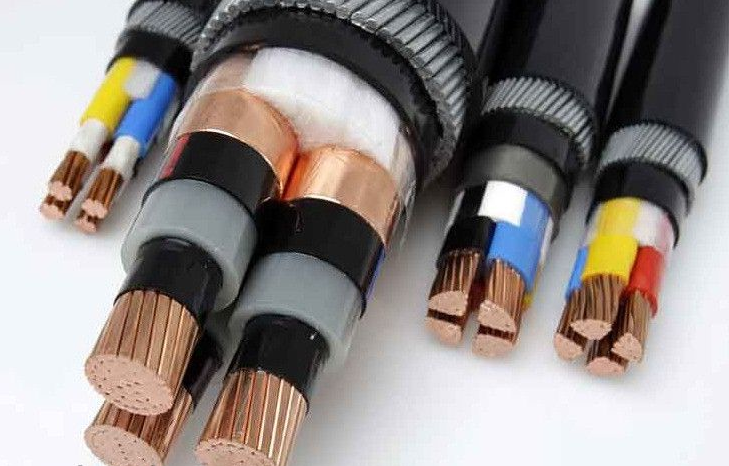Significance
Soil thermal resistivity is an important parameter in various applications related to heat transfer and thermal management of underground services. Soil thermal resistivity is the ability of the soil to resist the flow of heat.
Soil thermal resistivity is a crucial parameter in the design and operation of underground cable systems. When electrical cables are buried underground, heat is generated during operation. The surrounding soil acts as a thermal medium for heat dissipation. The thermal resistivity of the soil determines how effectively it can transfer the heat away from the cables, preventing excessive temperature rise. Soil thermal resistivity data helps in designing cable systems with appropriate thermal ratings, and ensures safe and efficient operation of the undergorund electrical
What is the unit for soil thermal resistivity?
The unit for soil thermal resistivity is typically expressed as thermal resistance per unit length. The most commonly used unit for soil thermal resistivity is Kelvin-meter per watt (K·m/W). This unit represents the thermal resistance of the soil over a specific distance per unit of heat flow.
Alternatively, the unit can also be expressed as Celsius-meter per watt (°C·m/W) or Fahrenheit-foot per British thermal unit (°F·ft/Btu). These units convey the same information but using different temperature scales and length units.
Soil thermal resistivity and heat transfer
Soil thermal resistivity is the ability of soil to resist the flow of heat. It is an important parameter in determining the heat transfer characteristics of the soil. The higher the value of soil thermal resistivity, the greater the resistance to heat transfer through the soil.
Heat transfer in soil occurs through conduction which is the transfer of heat through direct contact between particles or molecules. In soil, heat is conducted through the solid particles and the interstitial water. The thermal resistivity of the soil determines how easily heat can be conducted through it. Soils with higher resistivity have lower thermal conductivity, which means they conduct heat less effectively.
Soil thermal resistivity can vary significantly depending on the soil moisture content, temperature, compaction, and the composition of the soil. It is, therefore, important to consider these factors and conduct appropriate soil testing to determine the soil's thermal properties for specific applications.
How to reduce soil thermal resistivity
Reducing soil thermal resistivity is beneficial in applications where efficient heat transfer is desired. Here are a few methods that can help in reducing soil thermal resistivity:
- Soil Amendment
- Adding certain materials to the soil can improve its thermal conductivity and reduce thermal resistivity. For example, incorporating materials with higher thermal conductivity, such as sand or crushed rocks, into the soil can enhance heat transfer capabilities. These amendments increase the contact area between soil particles, allowing for better heat conduction.
- Moisture Management
- Moisture content in the soil affects its thermal properties. Increasing soil moisture levels can enhance thermal conductivity and reduce resistivity. Water has a higher thermal conductivity than dry soil, so proper irrigation or water management techniques can improve heat transfer capabilities. As a precaution, it is important to balance, as excessive moisture can lead to other issues such as soil erosion or waterlogging.
- Soil Compaction
- Compact soil has better thermal conductivity compared to loose soil. Compacting the soil can increase the contact between particles, reducing air gaps, and improving heat transfer. Techniques such as mechanical compaction or vibratory methods can be used to achieve better soil compaction.
- Thermal Backfill Materials
- In certain applications, such as underground cable systems, using thermal backfill materials with higher thermal conductivity can significantly reduce soil thermal resistivity. These specialized materials, such as thermally enhanced grouts or backfill compounds, have superior thermal properties and can enhance heat dissipation from cables or other infrastructure.
It is important to note that the effectiveness of these methods may vary depending on the specific soil composition, environmental conditions, and the intended application. Consult experts or engineers specializing in the relevant field to determine the most suitable approach for reducing soil thermal resistivity in a particular scenario.
Standards for soil thermal resistivity
- IEC 62548 - Soil thermal resistivity measurements. This technical specification provides guidelines for the measurement of soil thermal resistivity using various laboratory and field methods. It includes procedures for sample preparation, measurement techniques, and data interpretation.
- ASTM D5334 - Standard Test Method for Determination of Thermal Conductivity of Soil and Soft Rock by Thermal Needle Probe Procedure. Although not an IEC standard, ASTM D5334 is widely accepted and referenced for determining the thermal conductivity of soil and soft rock materials. Thermal conductivity is an important parameter in calculating soil thermal resistivity.
- IEEE Std 442 IEEE Guide for Soil Thermal Resistivity Measurements. This IEEE standard provides guidance on measuring soil thermal resistivity for underground power transmission cable installations. It outlines test procedures, equipment requirements, and data interpretation methods.
- IEC 60287-1-1 Electric cables – Calculation of the current rating – Part 1-1: Current rating equations (100 % load factor) and calculation of losses – General. This part of IEC 60287 is applicable to the conditions of steady-state operation of cables at all alternating voltages, and direct voltages up to 5 kV, buried directly in the ground, in ducts, troughs or in steel pipes, both with and without partial drying-out of the soil, as well as cables in air.
Effect of soil reistivity in cable current carrying capacity
As per IEC 60287-1-1, at thermal equilibrium, the cable current carrying capacity (in Ampere) can be expressed as:

where:
I - conductor current, A
R - resistance of the conductor per unit length, Ω/m
θ - maximum conductor operating temperature, °C
θa - ambient temperature, °C
Δθ - temperature difference (θ-θa), K
T - thermal resistance per unit length between conductor and surrounding, K.m/W
The thermal resistance per unit length will be the sum of
- Thermal resistivity of insulation
- Soil thermal resistivity
As shown in eq.(1), the conductor current I is inversely proportional to the thermal resistance T.
